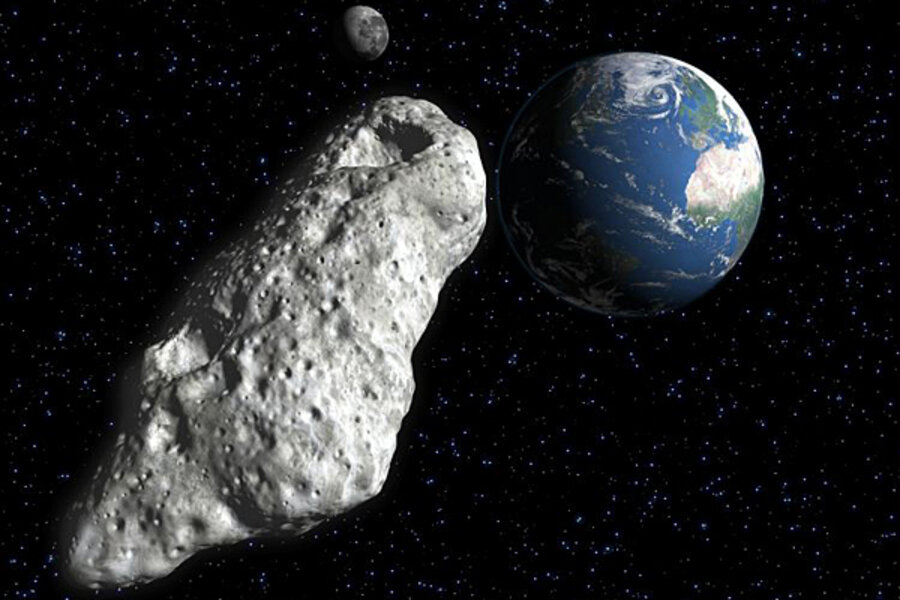Asteroid: Earth will get buzzed by an asteroid on Sunday
Loading...
Earth is about to have a close encounter with a house-sized asteroid on Sunday (Sept. 7), when a space rock discovered just days ago will zoom by our planet at a range closer than some satellites. But have no fear, NASA says the asteroid won't hit Earth.
The asteroid 2014 RC will safely buzz Earth at 2:18 p.m. EDT (1818 GMT) on Sunday. At that time, the asteroid will pass over New Zealand and fly just inside the orbits of the geosynchronous communications and weather satellites orbiting Earth about 22,000 miles (36,000 kilometers) above the planet's surface, according to a NASA statement. During its close pass, 2014 RC will be about 21,126 miles (34,000 km) from Earth's surface. That's about 10 times closer to the Earth than the moon.
"Asteroid 2014 RC was initially discovered on the night of August 31 by the Catalina Sky Survey near Tucson, Arizona, and independently detected the next night by the Pan-STARRS 1 telescope, located on the summit of Haleakal? on Maui, Hawaii," NASA officials said in a statement. [See images of potentially dangerous asteroids]
The asteroid will be very dim when it passes by Earth. Observers on the ground won't be able to catch sight of it with the naked eye, but, weather permitting, intrepid amateur astronomers should be able to catch a glimpse of the fast-moving space rock through telescopes, according to NASA.
You can also watch two webcasts featuring the asteroid flyby this weekend. The Slooh Community Observatory — an online organization that hosts live broadcast of celestial events — will begin their asteroid webcast on Sept. 6 at 10 p.m. EDT (0200 Sept. 7 GMT). The Virtual Telescope Project will also host a webcast featuring live images of the asteroid on Sept. 6 starting at 6 p.m. EDT (2200 GMT).
At its close approach, the 60-foot (20 meters) asteroid will fly about 25,000 miles (40,000 km) from the center of Earth. The average radius of the Earth (the distance from the center of the planet to its surface) is about 3,959 miles (6,371 km).
The speedy asteroid isn't a threat to satellites orbiting Earth, and the space rock could even give scientists a special opportunity to learn more about asteroids because it will be so close to the planet, according to NASA.
NASA officials have also mapped out 2014 RC's future orbits to see whether the near-Earth object might pose a threat to the planet in the future.
"While 2014 RC will not impact Earth, its orbit will bring it back to our planet's neighborhood in the future," NASA officials said in the same statement. "The asteroid's future motion will be closely monitored, but no future threatening Earth encounters have been identified."
Scientists have found more than 10,000 near-Earth objects in the solar system.
Follow Miriam Kramer @mirikramer and Google+. Follow us @Spacedotcom, Facebook and Google+. Original article on Space.com.
- NEOs: Near Earth Objects - The Video Show
- Asteroid Basics: A Space Rock Quiz
- 60-Foot Asteroid To Give Earth Very Close Shave | Orbit Animation
- Near-Earth Asteroids: Famous Space Rock Flybys and Close Calls (Infographic)
Copyright 2014 SPACE.com, a TechMediaNetwork company. All rights reserved. This material may not be published, broadcast, rewritten or redistributed.







